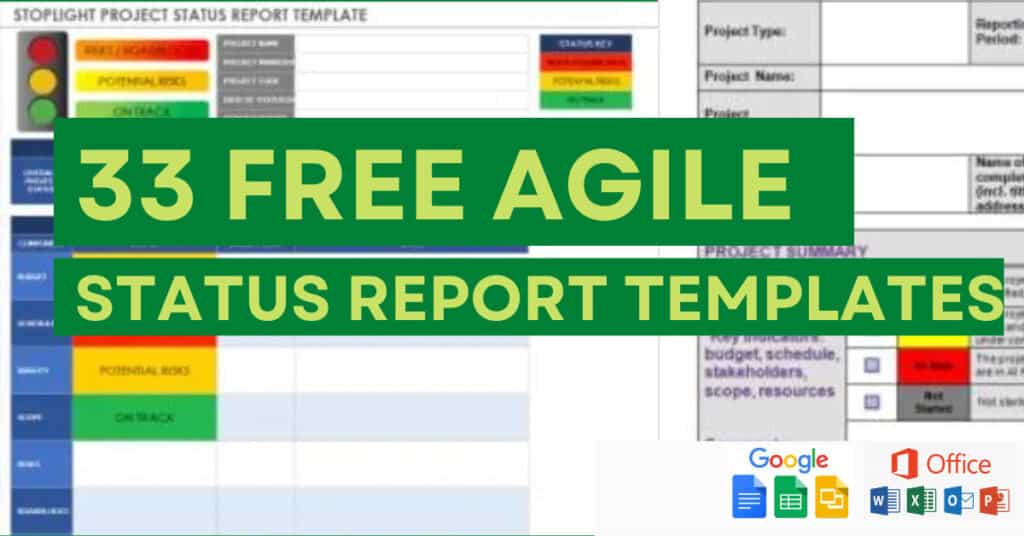
An Agile status report template is a structured document designed to capture the current progress and overall health of a project. Its primary purpose is to keep key stakeholders informed about project developments while proactively addressing potential issues or concerns. Unlike traditional project status reports, which focus on progress within a set timeframe and compare it against the project plan, Agile status reports provide deeper insights into project performance and emerging trends.
They also support backlog refinement and offer valuable analysis of product quality. Typically, an Agile status report includes updates on progress against the project plan to ensure the initiative remains on track and is completed within the defined timeline. Status reports play a vital role in project management by fostering effective communication and transparency among project teams, stakeholders, and clients.
Additionally, they streamline communication by standardizing reporting formats, ensuring all stakeholders remain aligned, and minimizing uncertainty or misunderstandings throughout the project lifecycle.
Agile Status Report Template Word
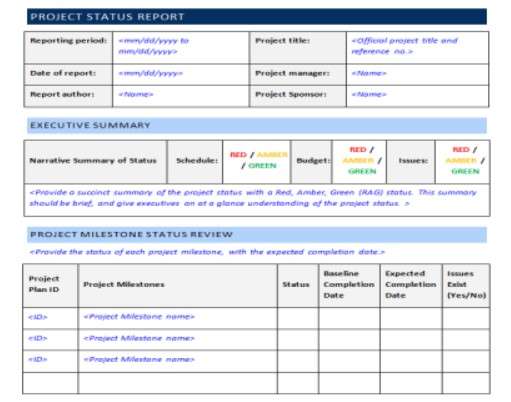
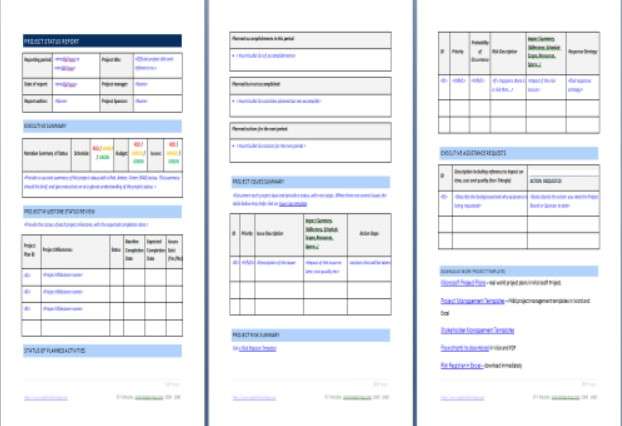
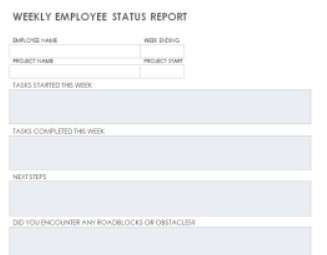
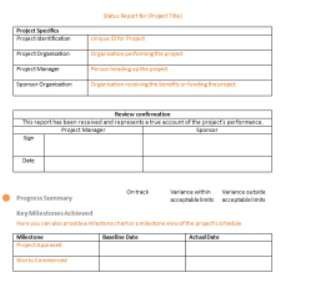
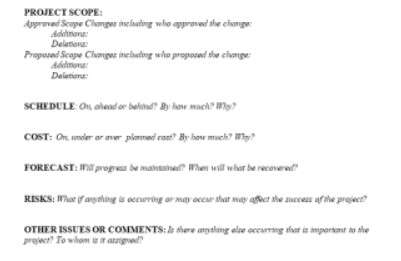
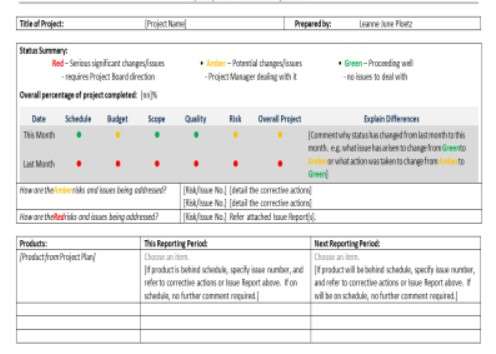
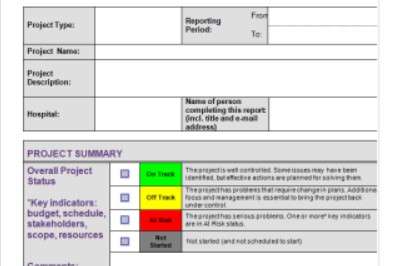
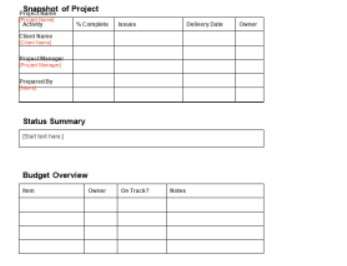
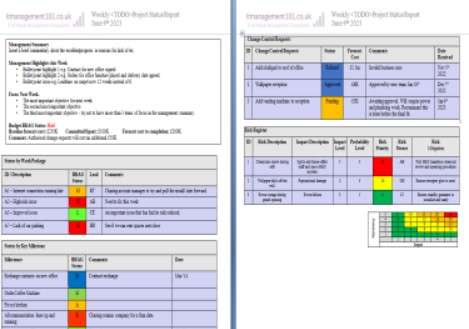
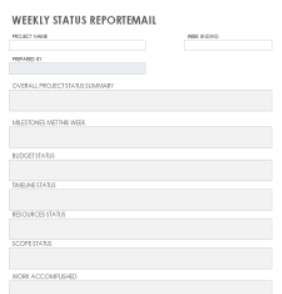
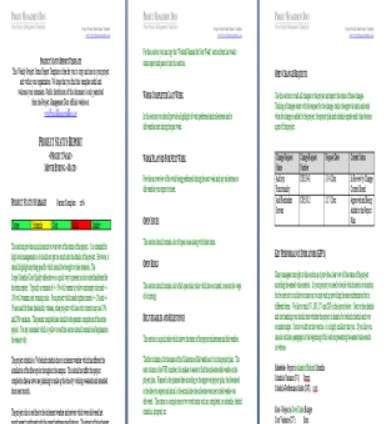
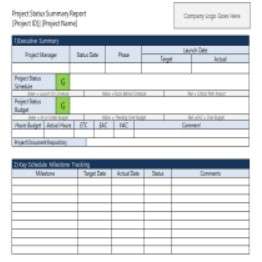
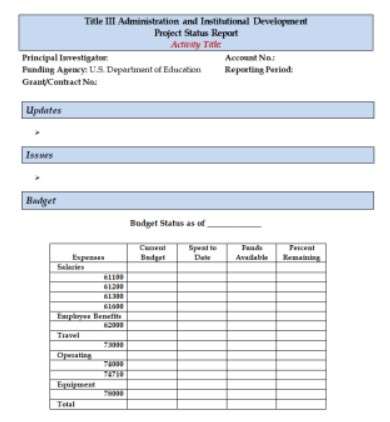
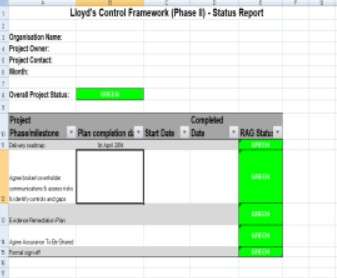
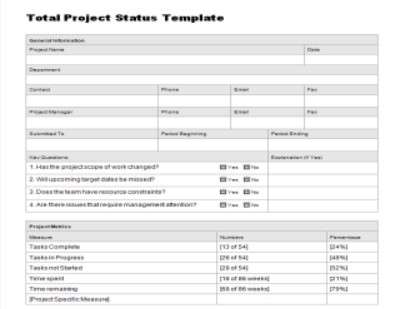
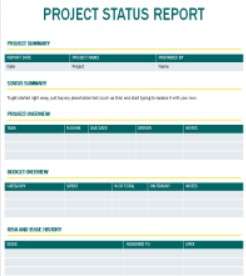
Contents of Project Status Report Template
There are many templates available online, and their content may vary. However, your status report should address these key areas to provide clarity, transparency, and accountability.
Project Information
This section provides general project details that set the context for the report.
- Project Details: Report date, project name, sponsor, project manager, and stakeholders
- Reporting Period: Define whether the report covers a weekly, bi-weekly, or monthly cycle
- Project Objectives: Briefly restate the project goals to remind stakeholders of the intended outcomes
- Project Phase: Identify which phase the project is currently in (initiation, planning, execution, or closure)
Project Status Summary
This section informs team members and stakeholders about project progress and updates.
- Key Accomplishments: Completed deliverables, milestones, and major action items achieved during the reporting period
- Completed Work: Finished tasks and outputs delivered since the last report
- Planned Work: Tasks and activities scheduled for the upcoming period, aligned with project scope
- Project Milestones: Status of milestone achievements, indicating if they are on track, delayed, or completed
- Project Deliverables: Outcomes or outputs completed that contribute to the execution of the project plan
- Action Items: Outstanding tasks that require attention, assignment, or follow-up
- Dependencies: Note any external or internal factors that the current progress relies upon
Project Health
This section provides a snapshot of the overall health of the project across critical dimensions.
- Schedule Overview: Assessment of whether the project is on track, ahead, or behind schedule
- Budget Overview: Financial status, including costs incurred, budget remaining, and any variances
- Scope Overview: Updates on whether the project is meeting defined requirements or experiencing scope changes
- Quality Overview: Status of quality standards, test results, or quality assurance activities
- Risk Management Overview: Summary of identified risks, mitigation strategies, and contingency planning
Issues and Risks
This section highlights challenges and potential threats to project success.
- Current Issues: Problems actively impacting progress and the actions being taken to resolve them
- Risks: Potential risks that could affect cost, schedule, or scope, along with risk probability and impact levels
- Roadblocks: Obstacles slowing or preventing task completion that need escalation or external support
Conclusions and Recommendations
This section provides the project manager’s insights, decisions, and proposals.
- Recommendations: Actionable next steps, requests for stakeholder decisions, or process improvements.
- Resource Management: Evaluation of staffing, skill gaps, and resource allocation needs
- Risk Management: Suggested strategies to minimize or eliminate high-risk factors
- Scheduling Concerns: Adjustments or re-prioritization required to meet deadlines
Agile Status Report Template Excel
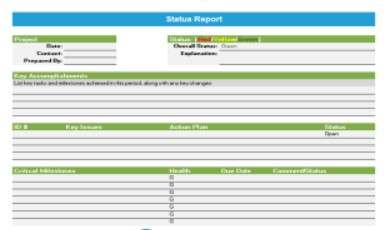

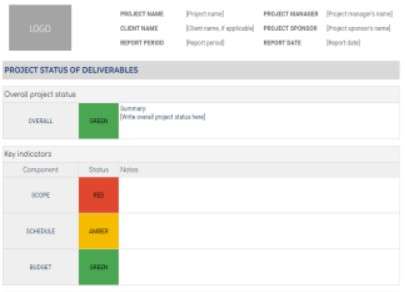
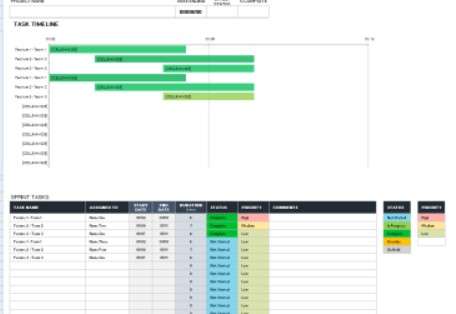
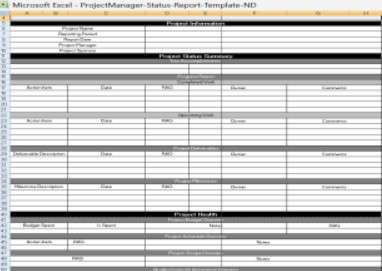
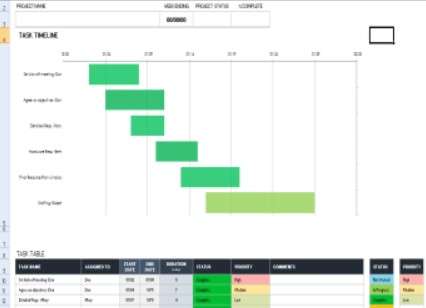
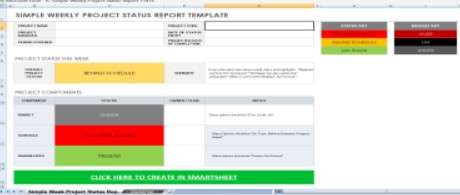

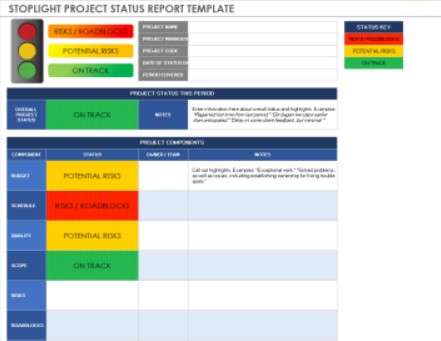
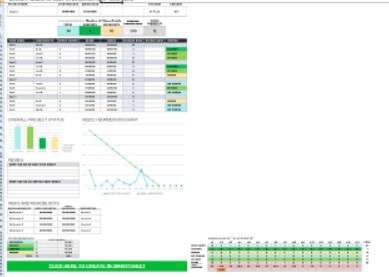
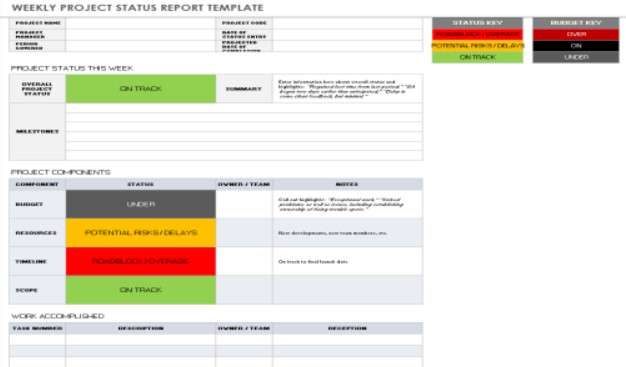
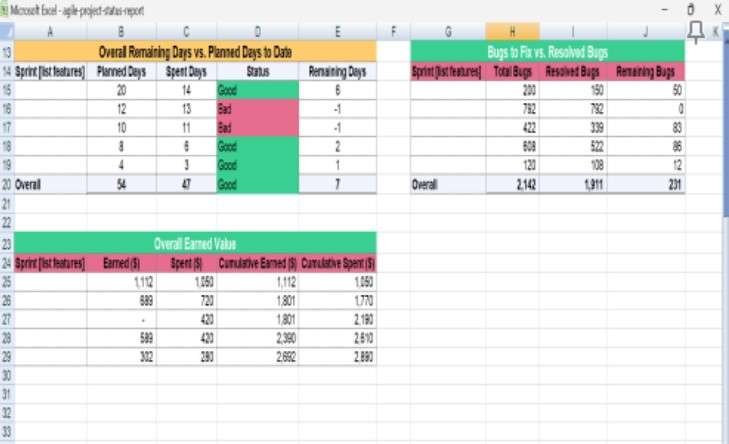
Benefits of Project Status Reporting
Project status reporting is a vital practice in project management, ensuring transparency, accountability, and alignment across teams and stakeholders. By providing structured updates on progress, risks, and overall project health, status reports help organizations stay on track, make informed decisions, and address potential challenges before they escalate. Below are the key benefits of effective project status reporting:
- Keeps Stakeholders Informed: Provides timely and accurate updates on project progress, risks, and deliverables, ensuring stakeholders remain aligned and engaged throughout the project lifecycle.
- Improves Communication: Establishes a structured and consistent channel for sharing information, reducing misunderstandings, and enabling proactive issue resolution.
- Supports Flexible Reporting: Can be tailored to daily, weekly, or monthly cycles, with weekly reporting being the most common practice, ensuring updates meet the needs of different stakeholders.
- Saves Time and Effort: Templates simplify the reporting process by standardizing formats, reducing repetitive work, and allowing project managers to focus on higher-value tasks.
- Enhances Portfolio Management: Provides visibility across multiple projects, enabling both high-level overviews and detailed performance tracking for better resource allocation and prioritization.
- Facilitates Better Decision-Making: Equips sponsors and stakeholders with accurate, real-time insights, allowing them to make timely and informed decisions that keep projects on track.
- Boosts Efficiency Through Automation: When combined with reporting software, status reports can be automated, minimizing manual effort and freeing teams to concentrate on strategic objectives.
Agile Status Report Template PowerPoint
These agile status report templates will allow you to focus on information, collect event records, and address the bigger picture.
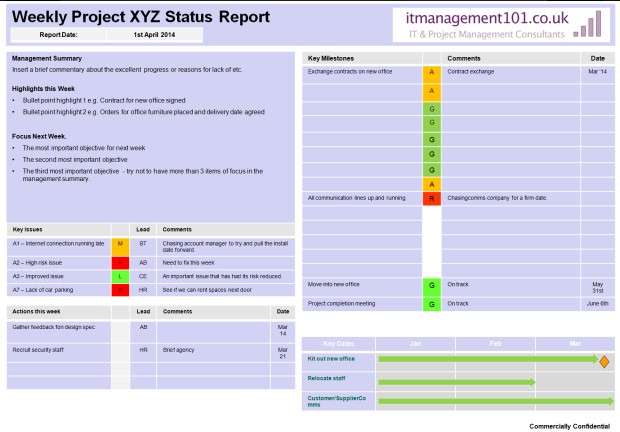
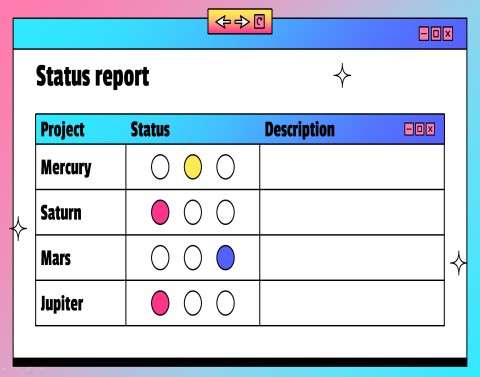
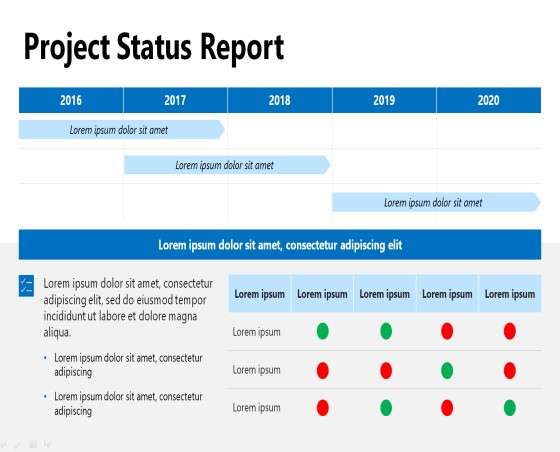
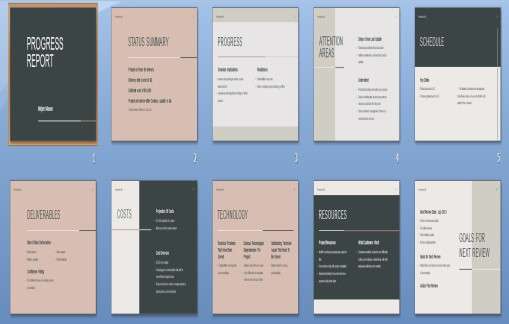

Agile Status Report Template FAQs
What should be included in a project status report?
A project status report generally includes the completed work, what follows, the project schedule, and a budget summary.
What are the good practices for writing and compiling a status report?
Understand the audience, decide the objective, format the report and its type, and gather the given data and facts.
What is the purpose of a project status report?
It keeps the stakeholders informed about project health aspects such as scope, issues, schedule, cost, and resources, and allows the management to address risks and issues. Status reports are also used to document the history of the project.
How often should the status of a project be reported?
There are no wrong or right answers to status reporting frequency; it should be done at a weekly, fortnightly, or monthly duration. The PMO must supplement reporting with a catch-up to identify issues.
Suggested articles:
- 41 x FMEA Template Google, Word, PDF, Excel
- 19 x Data Quality Checklist Template – Word, PDF
- 25 x Project Execution Plan Template – Word, Excel
Shane Drumm, holding certifications in PMP®, PMI-ACP®, CSM, and LPM, is the author behind numerous articles featured here. Hailing from County Cork, Ireland, his expertise lies in implementing Agile methodologies with geographically dispersed teams for software development projects. In his leisure, he dedicates time to web development and Ironman triathlon training. Find out more about Shane on shanedrumm.com and please reach out and connect with Shane on LinkedIn.